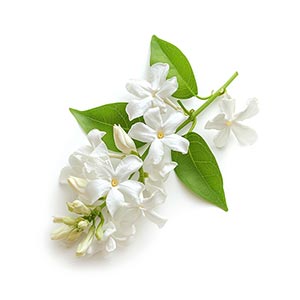Jasmine Sambac (Indian Jasmine), often referred to as the queen of flowers, has a rich history that dates back to ancient times. Originating from the northern parts of the Himalayan valleys, it has been cultivated and appreciated for its fragrant properties across various cultures. From the Chinese emperors of the Sung dynasty to the kings of Afghanistan, Nepal, and Persia in the 1400s, Jasmine Sambac has been a symbol of elegance and sophistication. In the world of perfumery, Jasmine Sambac holds a special place. Its sweet, heady fragrance is a favorite among perfumers, often used to add a touch of sophistication to a fragrance composition. It is known for its ability to adapt nicely with a multitude of fragrance compositions. Jasmine Sambac is also known for its medicinal properties. It has been used in traditional medicine for various purposes, including treating wounds, calming nerves, and promoting feelings of happiness and well-being. It is also known for its antibacterial, antiviral, and germicidal properties.
Natural or Synthetic?
Jasmine Sambac is cherished for its exotic, slightly fruity floral aroma. It is used in perfumery both naturally, extracted from the flower, and synthetically. The natural extraction process is labor-intensive, prompting the use of synthetic versions to emulate its distinctive scent in a more economical and consistent manner.
Fragrance Families Jasmine Sambac Most Commonly Found In
Show fragrances that contain Jasmine Sambac as a note



